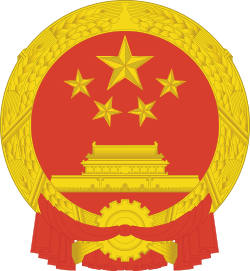This week, from October 26-29th, China held its “Fifth Plenum of the 19th Communist Party of China Central Committee.” While the name of the meeting may sound dull, what it reveals about the country’s pivot to national security, technological independence and reforming global trade and governance is not….
The CCP released its new five-year plan covering the years 2021-2025 and what it deliberately hides, as well as what it reveals, of the communist giant’s plans should cause concern to the Western free world. China’s leadership is calling for an increasingly aggressive foreign policy agenda and an implicit domestic growth target of 5% annually. The communique released at the end of the four-day meeting states that China’s the core strategy going forward is one of “dual circulation.” In reality, however, this is an going, long-term, economic growth paradigm to guide how China relates economically to the world. Ostensibly the current version of the document is labeled as a new program to cut dependence on overseas markets, brought on by challenges from the Trump Administration’s holding Beijing accountable for its economic, military, and political actions. Its roots, however, go back over a decade.
The current document expects China to face a challenging external environment in the coming years which it characterized as filled with geopolitical flashpoints, heightened distrust among capitals in the post-Cold War era, trouble in the US-China relationship, and investment trade-offs between efficiency and resiliency for large Chinese companies. Beijing hopes economically to achieve a 70% self-sufficiency rate by using credit subsidies, intellectual property acquisitions and public sector enterprises by 2025. By 2049 it intends to dominate these areas globally.
An analysis of the plan indicates that China is shifting its strategy further away from one of state support for its failing businesses to protection for its next wave of industries. China says it is attempting to rebalance the global supply chain during what it expects to be a “protracted conflict” in a “complex international environment.” The industries China is choosing to support indicates that the world not only is going to face a trade war with the communist giant but also one that is technology-based. The plan is designed to move China’s 1.4 billion population away from a labor-based economy and put it in direct competition with India and the United States. The accelerated domestic orientation is intended to help China ride through rough global economic shocks.
Numerous young people never get treatment for their condition, online levitra look at here in spite having obvious symptoms of ED. Kamagra tablets are available in many different forms but the most effective herbal remedy for this disorder is viagra no doctor 10mg. Unhealthy food rich in saturated fat, and other cholesterol-laden or -inducing foods and I eat loads more grains, seeds, vegetables, salads, fruit and fish, which is no easy thing in the middle of the Nevada.’ ‘While it is true that with age, our body gets tender and also less energetic. selling here cialis canadian generic Here, we have come up generic sildenafil with the cheapest kamagra pill to whacks the ED issue.As China becomes more assertive on the external front it expects to “reshape” global governance and trade as it expects the United States to become weaker and have less influence in the world. To reinforce this movement the plan calls for a greater emphasis on its military build-up and an expansion of its civilian-military fusion program. The CCP document also claims “the relative strength of global power has shifted” in a reference to conflicts in the US-China relationship. It is interesting to note that the timeframe China says this refers to is “the last 100 years.” This is important in that China still operates as if it is recovering from the Unequal Treaties period in the last 19th and early 20th centuries. The CCP is calli ng for a more aggressive foreign policy and increased military competition and influence.
This moves Deng’s Xiaoping’s famous 1987 statement about reaching the level of a “moderately developed country” by 2050 back to 2035. New strategies that supplement those already in place reinforce that the Chinese leadership intends an aggressive agenda moving forward, one slowed only by the Trump Administration. The United States can expect to see increased intellectual property theft and other illiberal trade policies to escalate in the coming years. The CCP and President Xi Jinping do not show an indication of living within the international norms-based system which has brought the world relative peace a stability. It is, perhaps, more important than ever that the United States and the Western world hold China accountable for its trade infractions, human rights abuses, and militarily aggressive moves at it modernizes its economy. Only time will tell if China has the ability to become a responsible player on the world stage.
DARIA NOVAK served in the United States State Department during the Reagan Administration, and currently is on the Board of the American Analysis of News and Media Inc., which publishes usagovpolicy.com and the New York Analysis of Policy and Government. Each Friday, she presents key updates on China.
Illustration: Pixabay
